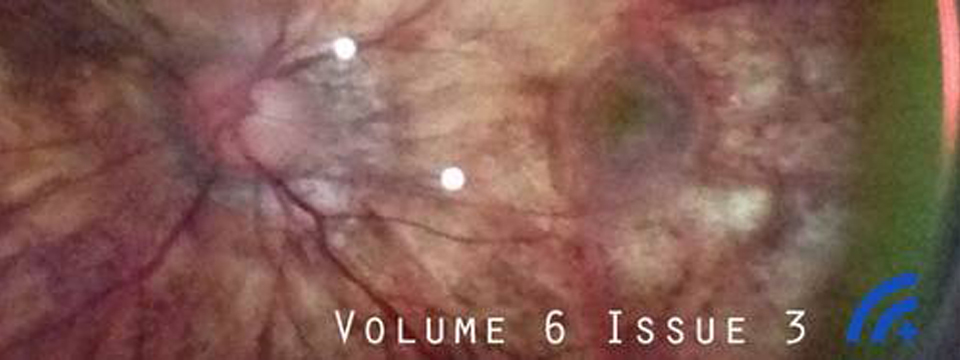Clinical Application of a Smartphone-Based Ophthalmic Camera Adapter in Under-Resourced Settings in Nepal
Carmel Mercado, MD1, John Welling, MD2,3,4, Matthew Oliva, MD3,4,5, Jack Li, MD2, Reeta Gurung, MD6, Sanduk Ruit, MD6, Geoff Tabin, MD1,3,8, David Chang, MD7, Suman Thapa, MD, PhD6, David Myung, MD, PhD1,8
1Byers Eye Institute, Stanford University, Palo Alto, CA, USA; 2John A Moran Eye Center, University of Utah, Salt Lake City, Utah, USA; 3Himalayan Cataract Project, Waterbury, VT, USA; 4Medical Eye Center, Medford, OR, USA; 5Casey Eye Institute, Oregon Health Sciences University, Portland, OR, USA; 6Tilganga Institute of Ophthalmology, Kathmandu, Nepal; 7Los Altos Eye Physicians, Los Altos, CA, USA; 8VA Palo Alto Health Care System, Palo Alto, CA, USA
Correspondence Author: david.myung@stanford.edu
Journal MTM 6:3:34–42, 2017
doi:10.7309/jmtm.6.3.6
Background: The ability to obtain high quality ocular images utilizing smartphone technology is of special interest in under-resourced parts of the world where traditional ocular imaging devices are cost-prohibitive, difficult to transport, and require a trained technician for operation.
Purpose: The purpose of this study was to explore potential anterior and posterior segment ocular imaging use cases for a smartphone-based ophthalmic camera adapter (Paxos Scope, Digisight Technologies, San Francisco, CA, USA) in under-resourced settings in Nepal.
Methods: From September to November of 2015 we utilized the Paxos Scope smartphone camera adapter coupled with an iPhone 5 to explore anterior and posterior segment clinical applications for this mobile technology. We used the device at a tertiary eye care facility, a rural eye hospital and a rural cataract outreach camp. We tested the device’s capability for high quality photo-documentation in clinic, in the operating room, and in the outreach camp setting. Images were automatically uploaded to a secure, cloud-based electronic medical record system that facilitated sharing of images with other providers for telemedicine purposes.
Results: Herein we present 17 ocular images documenting a wide variety of anterior and posterior segment pathology using the Paxos Scope from clinical cases seen in a variety of settings in Nepal.
Conclusions: We found the quality of both the anterior and posterior segment images to be excellent in the clinic, the operating room, and the outreach camp settings. We found the device to be versatile and user-friendly, with a short learning curve. The Paxos Scope smartphone camera adapter may provide an affordable, high-quality, mobile ocular imaging option for under-resourced parts of the world.
Keywords: Paxos Scope, mobile health, smartphone ophthalmic imaging, teleophthalmology, triage
Read More


